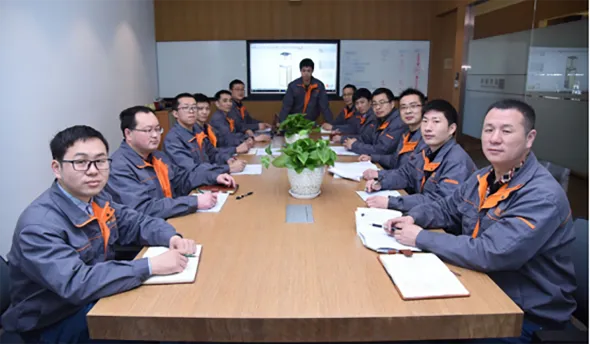mobile gantry crane
The Mobile Gantry Crane A Versatile Solution for Lifting Needs
In various industries, the demand for robust and versatile lifting solutions is paramount. One such innovative equipment that has gained popularity is the mobile gantry crane. This equipment is widely used across construction sites, warehouses, and manufacturing facilities due to its adaptability, efficiency, and ease of use.
Understanding Mobile Gantry Cranes
A mobile gantry crane is a type of overhead crane designed to lift and move heavy loads across a designated area. Unlike traditional fixed gantry cranes, mobile versions are equipped with wheels, allowing operators to change their position with ease depending on the task at hand. These cranes typically consist of a horizontal beam supported by two vertical legs, along with a hoist mechanism that enables vertical lifting.
The versatility of mobile gantry cranes makes them suitable for various applications, from construction and industrial sites to workshops and laboratories. They are particularly beneficial in environments where loads are frequently moved or where temporary lifting solutions are required.
Key Features and Benefits
1. Portability One of the standout features of mobile gantry cranes is their portability. Designed with wheels, these cranes can be easily maneuvered around workspaces, making them ideal for locations where space may be limited or where frequent relocation is necessary. This portability enhances operational efficiency, as it reduces the time and effort needed to set up lifting operations.
2. Adjustable Height and Span Mobile gantry cranes come with adjustable height and span, allowing users to customize the crane according to their specific lifting needs. This feature is especially beneficial when handling various types of loads or when working in areas with unique height constraints.
mobile gantry crane

3. Ease of Use Operating a mobile gantry crane is straightforward, making it accessible even for those who may not have extensive training in crane operations. Typically, the hoisting mechanism can be operated manually or through electric means, facilitating simple load management.
4. Cost-Effectiveness Investing in a mobile gantry crane can be a cost-effective solution for businesses, especially for those that do not require permanent heavy lifting installations. The affordability and versatility of these cranes enable companies to meet their lifting requirements without incurring heavy expenses associated with fixed lifting systems.
5. Safety Features High-quality mobile gantry cranes are designed with safety in mind. Many models include features such as locking mechanisms to secure the crane in place during operation, safety brakes, and overload protection. These considerations significantly reduce the risk of accidents and ensure safe lifting practices.
Applications of Mobile Gantry Cranes
Mobile gantry cranes are used in a wide array of industries, showcasing their adaptability. In construction, they assist in moving heavy materials, tools, and equipment around the site. Manufacturing plants leverage them for assembly line support, enabling the handling of parts and machinery efficiently. Maintenance workshops and automotive repair shops also benefit from their use, allowing mechanics to lift engines and heavy components with ease. Additionally, scientific laboratories utilize mobile gantry cranes to manage delicate equipment safely.
Conclusion
In conclusion, the mobile gantry crane stands out as a versatile and efficient solution for various lifting tasks across multiple industries. Its portability, adjustable features, ease of use, cost-effectiveness, and embedded safety mechanisms make it an invaluable asset for businesses seeking to enhance their operational capabilities. Whether in construction, manufacturing, or maintenance, mobile gantry cranes play a crucial role in facilitating safe and effective lifting operations, ultimately contributing to improved productivity and efficiency in the workplace. As industries continue to evolve, the role of mobile gantry cranes is expected to grow, making them an essential piece of equipment in the future of material handling.
-
Unlock Seamless Relocation with Our Heavy Equipment Moving ExpertiseNewsJun.06,2025
-
Unleash Unrivaled Flexibility with Our Adjustable Gantry CraneNewsJun.06,2025
-
Unleash Heavy-Duty Efficiency with Our Industrial Gantry Crane SolutionsNewsJun.06,2025
-
Revolutionize Steel Handling with Our Magnetic Lifter RangeNewsJun.06,2025
-
Master Equipment Mobility with Premium Machinery Mover SolutionsNewsJun.06,2025
-
Elevate Your Material Handling with Magnetic Lifter TechnologyNewsJun.06,2025
-
YS Permanent Lifting Magnets: The Smarter Way to Handle SteelNewsMay.22,2025
